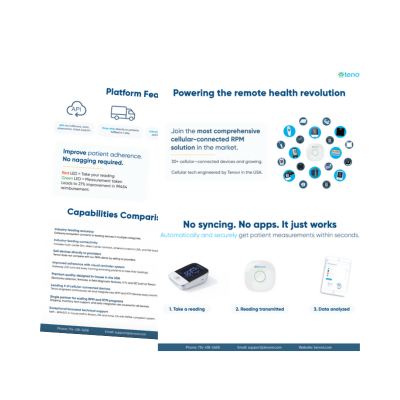Fatty liver disease is a chronic disease that affects 25% of people worldwide. It is characterized by excessive fat accumulation in the liver that can go unnoticed until it progresses to a severe stage. With the increase in obesity, type 2 diabetes, and metabolic disorders, the incidence of fatty liver disease continues to rise. These statistics show there is a need for effective fatty liver disease management strategies.
This article discusses how remote patient monitoring (RPM) technologies have the potential to help monitor and manage fatty liver disease.
Remote Patient Monitoring in Fatty Liver Disease Management
Traditional fatty liver disease management involves regular clinic visits, lifestyle modifications, and medication adherence. Consistent management is needed to avoid further complications such as cirrhosis. Transportation can make frequent doctor visits a challenge as well as maintaining consistent communication between patients and healthcare providers. Such barriers create potential gaps in care and suboptimal disease management.
RPM technologies help with fatty liver disease management challenges because patients must actively participate in their care. It also provides healthcare providers with enhanced insights into vital signs, body parameters, and lifestyle factors contributing to disease progression or improvement.
Remote Patient Monitoring Devices
By leveraging RPM devices such as weight scales, glucometers, and smartwatch devices, healthcare providers can track patients’ weight, blood glucose levels, physical activity, and sleep patterns in real-time. Below is a breakdown of common devices used in monitoring fatty liver disease.
Weight Monitoring Scales: Weight fluctuations and body composition must monitored often in fatty liver disease management. Digital weight scales allow patients to track their weight and healthcare providers to identify patterns, evaluate progress, and make recommendations for dietary changes or exercise regimens.
Blood Glucose Meters: Diabetes is common among those with fatty liver disease. Therefore, monitoring blood glucose levels in patients is important. With RPM glucometers patients can self-monitor their blood sugar levels regularly. The readings are automatically sent to their healthcare providers allowing for quick adjustments to medication dosages.
Wearable Devices: Smartwatches and fitness trackers monitor physical activity levels, sleep patterns, and heart rate variability. With this data healthcare providers can better understand patients’ overall health and make informed for the patient’s fatty liver disease management plan.
Depending on individual patient needs and conditions, other RPM devices may be needed, which include:
- Blood pressure monitors: To track hypertension, a common comorbidity in fatty liver disease patients.
- Pulse oximeters: To monitor oxygen saturation levels, particularly for patients with respiratory conditions.
- Spirometers: To assess lung function and track potential respiratory complications.
- Pedometers: To encourage and monitor physical activity levels, which are crucial for weight management and overall health.
Enhancing Lifestyle Modifications & Medication Adherence
Dietary changes and regular exercise are important in managing fatty liver disease. RPM technologies can support patients in adhering to lifestyle recommendations. Telemedicine provides personalized feedback, setting achievable goals, and offering motivational tools. For example, activity trackers encourage patients to increase their physical activity levels, while dietary apps can assist in meal planning and tracking nutritional intake.
Medication adherence is a critical aspect of fatty liver disease management, particularly for patients with chronic diseases like diabetes or hypertension. Remote therapeutic devices such as a smart pillbox can track medication adherence and provide reminders so patients take their medication as prescribed.
The Benefits of Remote Patient Monitoring for Fatty Liver Disease Management
Some benefits of adopting RPM for fatty liver disease management for both patients and healthcare providers are as follows.
- Improved caregiver and patient engagement and self-management
- Enhanced communication and real-time data sharing with healthcare providers
- Early detection of deteriorating health conditions and timely interventions
- Reduced hospital visits and associated costs
- Increased accessibility to care, especially for individuals in remote or underserved areas
Understanding Fatty Liver Disease Management with RPM
As the burden of fatty liver disease grows, remote patient monitoring has become increasingly more important. By leveraging the power of technology, healthcare providers can empower patients to take an active role in their care, fostering better disease management and improving overall health outcomes. The future of effective fatty liver disease management lies in personalized, data-driven approaches that prioritize patient engagement and continuous monitoring.
Whether your healthcare partners are interested in adopting remote patient monitoring to increase patient engagement, create a more efficient workflow, or increase revenue, Tenovi can help you find the best remote patient monitoring solution. You can book a free demo today.


